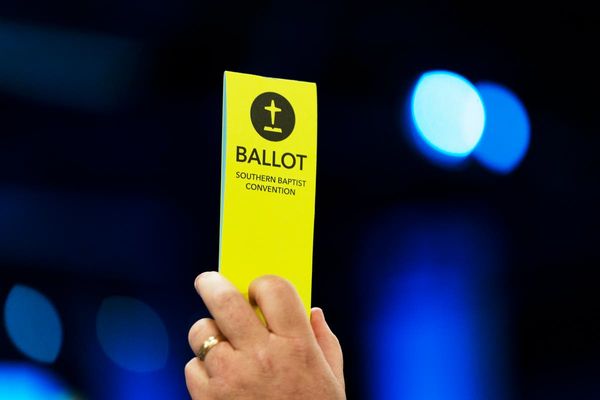
There are historical novels, and then there are fancy dress novels – though these often pass as historical novels. The historical novelist will try to get every detail right. Food, clothing and vocabulary have to be verifiably period. The writer of fancy dress fiction, by contrast, is more concerned with capturing the general vibe of the world they’re aiming to reinhabit. Attitude is everything.
The same holds for historical dramas on TV and film. A recent example of a triumphantly fancy dress movie is Marie Kreutzer’s Corsage. You get the whole pitch from the poster: Vicky Krieps, decked out in 1870s evening wear and white silk gloves, gives us the middle finger as casually as Eminem. It’s anachronistic, but as an expression of Empress Elisabeth of Austria’s kicking against the pricks it couldn’t be bettered. Forget the facts – here’s what was inside, trying to get out.
James Clarke’s debut novel, the Betty Trask prize-winning The Litten Path, was set during the miners’ strike of 1984-5, followed by Hollow in the Land, interconnected short stories about present-day Lancashire. Sanderson’s Isle, his addictively readable and energetically trippy second novel, takes place in 1969, during the hot and stormy months leading up to the moon landing.
The novel’s main character and narrator isn’t Sanderson but Tom Speake, a youngish man who, in the early scenes, is correctly accused of being both a doubting Thomas and a peeping Tom. It’s in the latter guise, catching sight of some alfresco sex, that Tom meets Joe Sanderson. Tom is searching for his father, a man he never knew, who turns out to be buried in the Moravian graveyard down the Kings Road. By fate or accident, Tom finds instead a surrogate father, a mentor and an enabler. Sanderson is the kind of charismatic surname-bearing Mephistopheles that JG Ballard’s heroes often encounter at the start of their adventures. These men open the door to a world within the familiar world of everyday life, and say lots of aphoristic things about it.
Or at least, that’s how it usually goes. In Sanderson’s Isle, the mentor is frantically struggling to regain his intellectual mojo. He’s a writer, credited with inventing New Journalism “before the Americans ever barged in and took credit for the idea”. Wolfe, Mailer and Capote got the literary glory while Sanderson ended up presenting a popular TV travelogue, Sanderson’s Isle – part Whicker’s World, part Jonathan Meades’ Abroad in Britain.
Clarke writes Sanderson as an enervated wit whose best lines are self-quotations; the aperçus are all given to Tom Speake. Clarke is particularly good at anatomising the secondary characters. “Like all Cockneys, Ivan seems shorter than he really is.” ‘“Jill has an inconvenient habit of going quiet for an abnormal length of time, fooling you into thinking it’s your turn to speak, before piping up again.” But he’s even better at the landscapes that are one of the main pleasures of the narrative, from scraggy east London to the vividness of the Lake District: “Set to the whine of woodland chainsaws, an easy bliss plays across the shimmering surface of Thirlmere.”
When we join him, Tom is rooming with Ivan and Jill in their Walthamstow lockhouse. But in trying to track down his father, he inadvertently commits a serious assault. The police begin to pursue him. When the chance arises of accompanying Sanderson north, as research assistant on a new, career-redeeming book, Tom tries to make his escape. Maybe he can find sanctuary in the mythical hippy commune, the Foundation, that is rumoured to exist somewhere near Keswick.
It’s at this point the anachronisms peppering Tom’s narration become so frequent and obtrusive that his 60s threads are revealed as fancy dress. The commune is referred to as living “off grid” (first recorded use in this exact sense: 1991). They’re “wild campers” (not a phrase anyone used in 1969). And in Tom’s second major and climactic drug trip, he has a vision of “winking neon fractals”. Fractals, the fernlike patterns of non-linear equations, were first described by Mandelbrot in 1977.
These details are crucial because they tell us what Clarke’s priorities are as a novelist. We’re not to sweat the small stuff. Who does fact-checking at a happening? Instead, we should see the awful cultural sprawl of his 1969 as a chaotic, emergent period when lots of the 1950s was slowly dying and much of the 70s and later was being born. In this, Tom’s final disillusionment is meant to speak for all of us trapped on this isle: “I appear to have joined a community of hypocrites.”
• Sanderson’s Isle by James Clarke is published by Serpent’s Tail (£16.99). To support the Guardian and Observer, order your copy at guardianbookshop.com. Delivery charges may apply.







